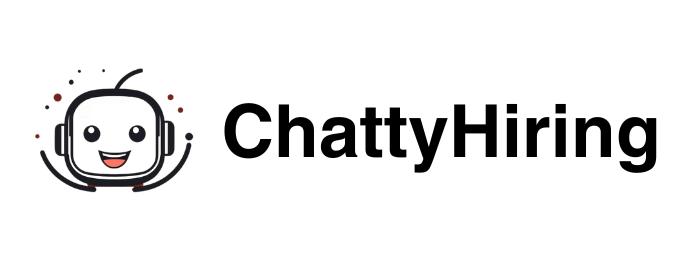In the realm of recruitment, a clear understanding of job requirements is paramount. This foundational step not only sets the tone for the entire hiring process but also ensures that the right candidates are targeted from the outset. Job requirements encompass a variety of elements, including the necessary skills, qualifications, and experience that a candidate must possess to be considered for a role.
It is essential for HR professionals to engage with hiring managers to gain insights into the specific needs of the position. This collaboration helps in crafting a comprehensive job description that accurately reflects the expectations and responsibilities associated with the role. Moreover, understanding job requirements goes beyond merely listing qualifications.
It involves recognizing the nuances of the role within the context of the organization’s culture and goals.
For instance, a candidate may possess all the technical skills required but may not align with the company’s values or work ethic.
Therefore, it is crucial to incorporate soft skills and cultural fit into the job requirements.
By doing so, recruiters can create a more holistic view of what constitutes an ideal candidate, ultimately leading to better hiring decisions. As highlighted by HR Examiner, aligning job descriptions with organizational culture can significantly enhance recruitment outcomes.
Key Takeaways
- Understanding the job requirements is crucial for effective shortlisting
- Utilize effective sourcing techniques to attract a diverse pool of candidates
- Implement screening and assessment methods to identify the best fit for the role
- Leverage technology for efficient candidate shortlisting and management
- Create a diverse and inclusive shortlist to promote a fair and equitable hiring process
Utilizing effective sourcing techniques
Traditional Methods Still Hold Value
Traditional methods such as job boards and recruitment agencies still hold value, but modern recruiters must also leverage social media, professional networks, and industry-specific forums to widen their reach.
Leveraging Online Platforms
Platforms like LinkedIn have become invaluable tools for sourcing candidates, allowing recruiters to connect with passive candidates who may not be actively seeking new opportunities. In addition to online sourcing, networking events and industry conferences can provide excellent opportunities to meet potential candidates face-to-face.
Employee Referrals and Networking
Furthermore, utilizing employee referral programs can tap into existing employees’ networks, often resulting in high-quality candidates who are more likely to fit into the company culture. Building relationships within professional communities can lead to referrals and recommendations that may not be accessible through conventional channels. According to Talent Culture, a well-rounded sourcing strategy that combines various techniques can significantly enhance the quality of candidates entering the recruitment pipeline.
Implementing screening and assessment methods

After sourcing candidates, implementing effective screening and assessment methods is crucial for narrowing down the applicant pool. Screening typically involves reviewing resumes and cover letters to identify candidates who meet the basic qualifications outlined in the job description. However, this initial step should be complemented by more in-depth assessment methods that evaluate candidates’ skills and competencies relevant to the role.
Techniques such as structured interviews, skills assessments, and personality tests can provide valuable insights into a candidate’s suitability. Structured interviews, in particular, have gained popularity due to their ability to reduce bias and ensure consistency in evaluating candidates. By asking each candidate the same set of questions, recruiters can more easily compare responses and assess how well each individual aligns with the job requirements.
Additionally, incorporating practical assessments or work samples can offer a glimpse into how candidates perform in real-world scenarios. This multifaceted approach to screening not only enhances the quality of shortlisted candidates but also contributes to a more objective hiring process. As noted by HR Zone, organizations that adopt comprehensive assessment methods often experience improved retention rates and employee satisfaction.
Leveraging technology for candidate shortlisting
| Technology | Benefits |
|---|---|
| Applicant Tracking System (ATS) | Automated resume parsing and keyword matching |
| AI-powered Screening Tools | Identify top candidates based on skills and experience |
| Video Interviewing Platforms | Efficient way to assess candidate communication and soft skills |
| Data Analytics | Insights into candidate sourcing channels and shortlisting effectiveness |
In today’s digital age, leveraging technology for candidate shortlisting has become an essential aspect of the recruitment process. Applicant Tracking Systems (ATS) are widely used to streamline the hiring workflow by automating various tasks such as resume screening and interview scheduling. These systems can significantly reduce the time spent on administrative tasks, allowing recruiters to focus on more strategic aspects of hiring.
Moreover, ATS can help identify top candidates based on predefined criteria, ensuring that only those who meet the essential qualifications are considered for further evaluation. Beyond ATS, advanced technologies such as artificial intelligence (AI) and machine learning are increasingly being integrated into recruitment processes. These tools can analyze vast amounts of data to identify patterns and predict candidate success based on historical hiring outcomes.
For instance, AI-driven platforms can assess resumes for specific keywords or phrases that align with job requirements, thereby enhancing the efficiency of candidate shortlisting. However, it is essential for organizations to strike a balance between technology and human judgment; while technology can aid in identifying potential candidates, human intuition remains invaluable in assessing cultural fit and interpersonal skills. As highlighted by Workology, embracing technology in recruitment can lead to more informed decision-making and improved hiring outcomes.
Creating a diverse and inclusive shortlist
Creating a diverse and inclusive shortlist is not just a moral imperative; it is also a strategic advantage for organizations seeking to foster innovation and creativity. A diverse workforce brings together individuals from various backgrounds, experiences, and perspectives, which can lead to enhanced problem-solving and decision-making capabilities. To achieve this goal, recruiters must actively seek out candidates from underrepresented groups and ensure that their sourcing strategies are inclusive.
One effective approach is to implement blind recruitment practices that remove identifying information from resumes during the initial screening process. This helps mitigate unconscious bias and allows recruiters to focus solely on candidates’ skills and qualifications. Additionally, organizations should consider partnering with diversity-focused organizations or attending job fairs aimed at underrepresented communities.
By actively promoting diversity in recruitment efforts, companies can create a more equitable hiring process that reflects their commitment to inclusion. According to HR Trend Institute, organizations that prioritize diversity in their hiring practices often experience improved employee engagement and retention rates.
Collaborating with hiring managers and stakeholders

Collaboration with hiring managers and stakeholders is essential for ensuring that the recruitment process aligns with organizational goals and expectations. Hiring managers possess valuable insights into the specific needs of their teams and can provide guidance on what qualities are most important in a candidate. By involving them early in the recruitment process, recruiters can gain a clearer understanding of the role’s requirements and avoid misalignment later on.
Regular communication between recruiters and hiring managers throughout the shortlisting process is crucial for maintaining transparency and ensuring that everyone is on the same page. This collaboration can also facilitate quicker decision-making when it comes to advancing candidates through the hiring pipeline. Furthermore, involving other stakeholders—such as team members or executives—can provide additional perspectives on candidate fit and help create a more comprehensive evaluation process.
As noted by TLNT, fostering collaboration among all parties involved in recruitment can lead to better hiring outcomes and increased buy-in from stakeholders.
Communicating with candidates throughout the process
Effective communication with candidates throughout the recruitment process is vital for creating a positive candidate experience. From initial outreach to final decisions, keeping candidates informed about their status helps build trust and engagement. Clear communication not only reflects well on the organization but also enhances its employer brand in a competitive job market.
Recruiters should establish regular touchpoints with candidates, providing updates on their application status and next steps in the process. Additionally, offering constructive feedback—whether positive or negative—can help candidates understand their strengths and areas for improvement. This level of transparency fosters goodwill among candidates, even those who may not ultimately be selected for the role.
According to HRE Executive, organizations that prioritize candidate communication often see higher levels of applicant satisfaction and increased likelihood of referrals.
Evaluating and improving shortlisting strategies
Finally, evaluating and improving shortlisting strategies is an ongoing process that requires reflection and adaptation. After each hiring cycle, it is essential for HR professionals to assess what worked well and what could be improved in their shortlisting approach. Gathering feedback from hiring managers, stakeholders, and even candidates can provide valuable insights into areas for enhancement.
Data analytics can play a significant role in this evaluation process by tracking key metrics such as time-to-fill positions, candidate quality ratios, and retention rates of new hires.
By analyzing these metrics, organizations can identify trends and make data-driven decisions about their recruitment strategies moving forward. Continuous improvement not only enhances the effectiveness of shortlisting but also contributes to building a more robust talent acquisition framework overall.
As emphasized by Smart Recruiters, organizations that commit to evaluating their recruitment processes regularly are better positioned to adapt to changing market conditions and attract top talent consistently. In conclusion, effective shortlisting is a multifaceted process that requires careful consideration at every stage—from understanding job requirements to evaluating strategies post-hire. By employing best practices in sourcing, screening, collaboration, communication, diversity initiatives, and technology utilization, organizations can enhance their recruitment efforts significantly.
Ultimately, a well-executed shortlisting strategy not only leads to better hires but also contributes to long-term organizational success.
When considering the best candidate shortlist strategy, it is important to also explore the advantages of conducting interviews directly from social media or QR codes. This innovative approach can streamline the hiring process and provide valuable insights into candidates’ personalities and communication skills. To learn more about how this method can enhance your recruitment efforts, check out this article on the advantages of conducting interviews directly from social media or QR codes.
FAQs
What is a candidate shortlist strategy?
A candidate shortlist strategy is a method used by hiring managers and recruiters to identify and select the best candidates for a job opening. It involves evaluating and narrowing down a pool of applicants to a smaller, more manageable group of individuals who are the most qualified for the position.
Why is a candidate shortlist strategy important?
A candidate shortlist strategy is important because it helps streamline the hiring process, saves time and resources, and ensures that only the most suitable candidates are considered for the job. It also allows for a more efficient and effective selection process, leading to better hiring decisions.
What are the key components of a candidate shortlist strategy?
Key components of a candidate shortlist strategy include defining the criteria for the ideal candidate, screening resumes and applications, conducting initial interviews, and using assessment tools to evaluate candidates’ skills and qualifications. It also involves collaboration between hiring managers and recruiters to make informed decisions.
How can a candidate shortlist strategy be implemented effectively?
To implement a candidate shortlist strategy effectively, it is important to clearly define the job requirements and desired qualifications, use technology and applicant tracking systems to streamline the process, and involve key stakeholders in the decision-making process. Additionally, regular communication and feedback among the hiring team is crucial for successful implementation.
What are the potential challenges of a candidate shortlist strategy?
Challenges of a candidate shortlist strategy may include bias in the selection process, a large volume of applicants to review, and the need to balance speed with thoroughness in evaluating candidates. It is important to be mindful of these challenges and take proactive steps to mitigate them, such as implementing structured interview processes and utilizing diverse hiring panels.
-

A passionate advocate for the future of HR innovation. With expertise in leveraging AI to revolutionize recruitment processes, Carlos has a clear vision: empower HR teams while creating meaningful candidate experiences.
View all posts





